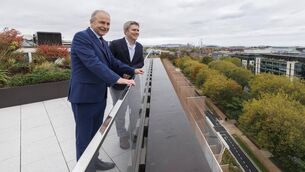Senior executives have always wanted to learn: How they learn has changed

'Senior executives are more time-poor than ever, so short bursts of learning are key.' Picture: iStock
Despite ever-increasing workloads and time pressures, senior executives feel learning and development are more vital than ever, according to new research from the Irish Management Institute.
“As the business world becomes more complex, this brings new time and workload pressures,” says Dr Colm Foster, director of executive education with the IMI.
“But this complexity means the overall need for learning is increasingly urgent. What has changed is how senior executives are learning — and want to continue learning.” The IMI has conducted extensive research and customer feedback sessions on the topic.
According to Dr Foster, a number of fundamental truths stood out. “Senior executives are more time-poor than ever, so short bursts of learning are key. However, only learning delivered by a world-class faculty justifies taking time away from the day-to-day running of their businesses.
"The peer group is key, senior executives want to learn alongside other senior executives, who they can share experiences with and build new business relationships with. Finally, coaching needs and time for reflection were found to be paramount.”
The demand for a highly focused programme for senior executives — including learning accelerators like reflective practices, peer learning and networking opportunities — has led the IMI to create the Senior Executive Experience (SEE).
With an emphasis on future-focused learning, the programme covers topics like leading and managing change, strategic decision-making and risk management, organisational resilience, digital transformation, and innovation.
“The reality is every organisation is facing disruption, and most are struggling to realise the benefits of digital transformation,” says Tony Moroney, programme director for the digital transformation section of SEE, discussing the core tenets of his programme.
Moroney stresses that sustaining transformation takes time, so it is important leaders are equipped to sustain both their efforts and those of their team if they are to realise the benefits of digital transformation.
The focus on digital transformation represents a shift in learning needs already evident pre-covid. In 2018, Carrington Crisp data revealed three-quarters of firms felt short bursts of learning delivered flexibly were valuable in meeting developmental needs, alongside a growing popularity for blended or stackable learning.
The covid-19 pandemic forced employers and leaders to embrace new digital ways of working, but truthfully the pandemic accelerated digital change in a landscape already disrupted and evolving.
It is no surprise that one of the top priorities for senior leadership is to build a workforce fit for the future, which includes meeting their own learning and development needs as they manage ever-increasing complexity.
But the increased demand for learning in the face of ongoing digital transformation is not without its challenges, admits Dr Foster.
“Where once participants were limited to domestic or local providers like ourselves, now they can choose learning providers from all around the world. Be it borderless digital providers or international business schools offering programmes remotely.”
But along with a more crowded market comes opportunity.
“It makes us step up our game,” adds Dr Foster. “It means we have to really home in on what our participants need, especially senior executives because their time is so tight. It’s not just offering more flexible learning, it’s about leveraging our content, pedagogy and extensive network of connections to offer learners something other providers can’t.”
This includes an immersive ‘Learning by Doing’ orientation, further enhanced by ‘Learning Lab’ environments.
“The learning lab is all about harnessing the collective intelligence of the peer group,” says Moroney, “And immersing the group in real business problems, with a focus on applying newly developed skills. The aim is to bring together the learning from the various experiences and fuse them into a coherent, actionable plan that leaders can bring back to their organisations.”
The emphasis on peer learning and face-to-face learning demonstrates how critical these types of learning are, despite the growth of digital-first and online learning in recent years.
“Face-to-face learning facilitates relationship building, networking and creates a shared learning experience, all of which are valued by senior executives,” says Dr Foster.
“It also allows participants to engage in real-time discussions and receive immediate feedback from faculty and peers.”
With 87% of employers developing a formal lifelong learning strategy to upskill and reskill staff, and over half expecting budgets for L&D to increase in the coming years, demand for senior executive learning is set to continue.
Nevertheless, because new skills are constantly being required by individuals, organisations and senior leadership are seeking quicker returns when investing in a learning provider. Part of that return means picking providers with strong brands, meaning senior executives are likely set to continue choosing recognised brands like the IMI over less well-known digital providers.
- Ben Davern leads research and insights with the IMI












